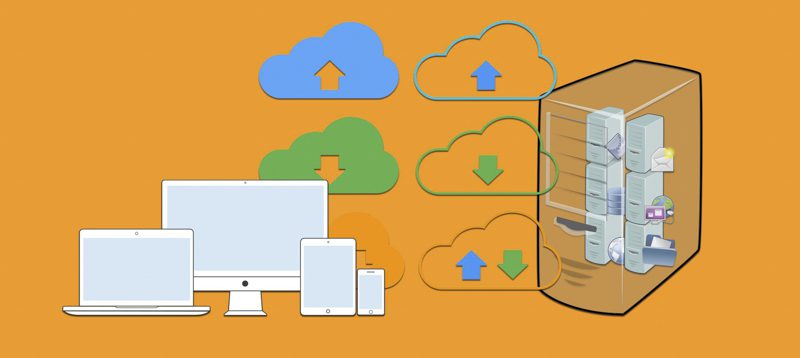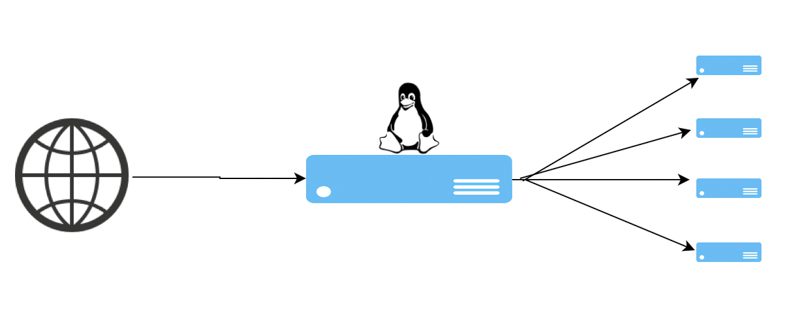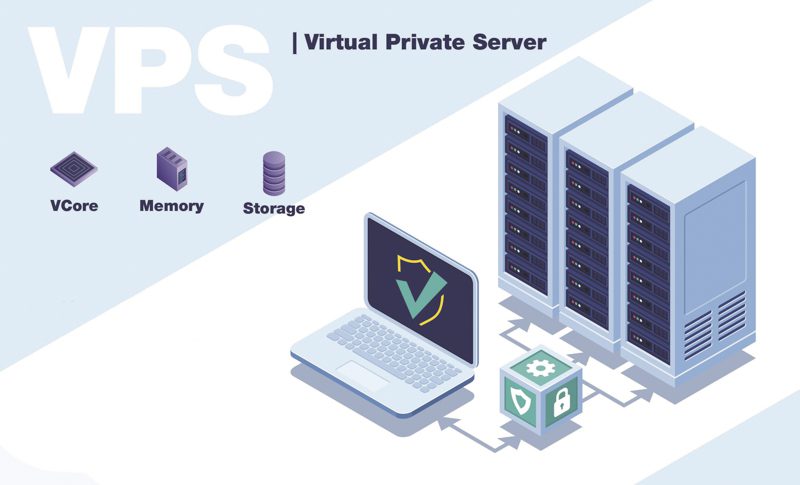What Is A Virtual Server And What Is Its Use?
In today’s changing world landscape, virtualization has become a common practice for businesses and individuals.
Virtual servers or VPS (virtual private servers) have gained considerable popularity among many virtualization techniques.
This article will examine what a virtual server is, its uses, how to connect to it, and the best methods for transferring files to a virtual server.
A virtual server, also known as a virtual private server (VPS), is a hosting service that allows users to have their virtual machine running on a single physical server.
A virtual server provides an isolated environment with dedicated resources, including CPU, RAM, and storage space, and allows users to install and run their operating systems and applications.
Types of virtual servers
There are different types of virtual servers available, the most common of which are Windows and Linux virtual servers.
In general, virtual servers are virtualized instances of a physical server that are created using specialized software. These servers work independently and can run their operating systems and applications.
One of the significant advantages of using virtual servers is the possibility of creating several virtual machines on a physical server, optimal use of computing resources, and reduced hardware costs.
Windows virtual server
Windows virtual server is a popular virtual server that runs on the Windows operating system. It allows users to run Windows-based applications and software in a virtual environment.
Windows virtual servers, like other virtual servers, offer advantages such as affordability, scalability, flexibility, isolation, and easy management. They are commonly used for web hosting, application development, testing, and other business purposes.
Linux virtual server
A Linux virtual server is a machine running a Linux-based operating system. Linux virtual servers are known for their stability, security, and flexibility. They are commonly used for web servers and databases.
Virtualization
Virtualization is a computing technique that allows the creation of virtual versions of operating systems or computer resources. In virtual servers, virtualization involves partitioning a physical server into multiple virtual machines, each with its own set of resources and operating systems. This allows users to have more control over their hosting environment and customize it according to their needs.
Advantages of virtual servers
Virtual servers have many advantages, making them an attractive choice for businesses and individuals. Some of the benefits of virtual servers are:
- Cost-effectiveness: Virtual servers are usually more cost-effective than dedicated physical servers because they allow for better resource utilization and enable multiple virtual machines to run on a single physical server.
- Scalability: Virtual servers can be increased or decreased quickly. It allows users to adjust resources based on their needs without any downtime.
- Flexibility: Virtual servers allow users to customize their hosting environment, including installing their operating system, software, and applications.
- Isolation: Virtual servers provide isolated environments and ensure that resources allocated to each virtual machine are not shared with other users, providing better security and performance.
- Easy management: Virtual servers are usually managed through a web-based control panel, making it easy for users to monitor and manage the virtual machine. Users can efficiently perform tasks such as rebooting, upgrading resources, and managing files through a user-friendly interface.
- Accessibility: Virtual servers can be accessed from anywhere with an Internet connection, allowing users to manage their servers and remotely access their programs and files. This provides convenience and flexibility for businesses and individuals who need to work remotely or access their servers on the go.
- Advanced security: Virtual servers offer higher protection than shared hosting, as each virtual machine operates in its isolated environment. This minimizes the risk of data breaches or security vulnerabilities from other users on the same physical server.
How to connect to the virtual server
Connecting to a virtual server includes several steps depending on the hosting provider and the operating system used in the virtual server.
To connect to a virtual machine in Azure, follow these steps:
- Go to the Azure portal and search for “virtual machines,” then select it from the list of options.
- Select the virtual machine you want to connect to from the list.
- On the virtual machine page, find the “Connect” button at the top and click on it.
- On the “Connect to virtual machine” page, select “RDP” as the connection type, and then select the appropriate IP address and port number. In most cases, you can use the default IP address and port. Click on “Download RDP File.” You may need to click “Request access” first to request access before you can download the RDP file.
- Open the downloaded RDP file and click “Connect” when prompted. You may get a warning that the .rdp file is from an unknown publisher, but ignore it. Click “Connect” to continue.

- In the “Windows Security” window, click on “More choices” and then select “Use a different account.” Enter the credentials of a user account in the virtual machine and then click “OK.”
- For a local account, enter the username and password of the local history you specified when creating the virtual machine. The domain must be entered as vmname\username, where “name” is the virtual machine’s name.
- For the virtual machine connected to the domain, enter the username in the format Domain\Username. This account must also be a member of the Administrators group or be granted remote access privileges to the virtual machine.
- For the Domain Controller, enter the username and password of a domain administrator account for that domain.
- Click “Yes” to confirm the identity of the virtual machine and complete the login process.
File transfer to a virtual server
Transferring files to the virtual server includes several methods depending on the operating system used in the virtual server and the user’s preference. Here are some standard ways:
FTP ( File Transfer Protocol ): FTP is a standard network protocol that transfers files between a client and a server over a network. Users can use an FTP client such as FileZilla or WinSCP to transfer files to and from their virtual server by connecting to it using the server’s IP address or hostname, server username, and password.
SFTP ( Secure File Transfer Protocol ): SFTP is a secure version of FTP that encrypts file transfers for added security. Users can use an SFTP client such as FileZilla or WinSCP to securely transfer files to and from their virtual server using the server’s IP address or hostname, server username, and password.
Web-based file managers: Some virtual server hosting providers offer web-based file managers that allow users to upload and manage files through a web browser. Users can quickly enter the control panel of their hosting providers, go to the file management section, and use the provided tools to upload, download, and manage files on their virtual server.
Command line tools: Users can transfer files to and from their virtual server using command line tools, such as SCP (Secure Copy Protocol) or Rsync, available on most Unix-based operating systems. These tools allow users to securely transfer files using the command line by specifying source and destination files or directories.
What is a VPS server?
A VPS server (virtual private server) is a virtual server that provides dedicated resources, including CPU, RAM, and storage, in a virtual environment. This server is called “private” because the resources allocated to each virtual machine are not shared with other users.
A virtual private server increases performance and security. A VPS server is commonly used for web hosting, application development, testing, and other business purposes. It offers the same benefits as different virtual servers: affordability, scalability, flexibility, and easy management.
The difference between VPN and VPS
What VPN (Virtual Private Network) and VPS (Virtual Private Server) have in common is that they both involve virtualization. However, there are differences between VPN and VPS, and each one has different goals, which we mention below:
A VPN is a private network that extends across a public network such as the Internet and allows users to securely connect to a remote network or access the Internet anonymously. It encrypts the data sent between the user’s device and the VPN server, increasing security and privacy.
A VPN is commonly used to secure internet connections, access geo-restricted content, and protect online privacy.
VPS is a virtual server that provides dedicated resources in a virtual environment. A VPS allows users to run their operating system and applications on a single virtual machine, providing more control and customization options than shared hosting.
In short, a VPN is used to secure internet connections and protect online privacy. In contrast, a VPS hosts websites, applications, and other computing tasks in a virtual environment.
Trade Virtual Server
A virtual trade server, or FOREX VPS, is a specialized virtual server optimized for Forex trading software. Forex VPS provides low-latency connections to brokers’ trading servers and ensures fast and reliable trade execution. Virtual Trade Servers are commonly used by forex traders who need uninterrupted access to trading platforms, automated trading systems, and expert advisors (EAs) to take advantage of opportunities in the forex market.
Conclusion
With easy management and remote access, virtual servers provide businesses and individuals with the resources and control needed to meet their hosting needs efficiently. As a result, virtual servers, including VPS servers and virtual trade servers, offer a cost-effective, scalable, flexible, and secure solution for hosting websites, applications, and other computing tasks.
Understanding the differences between VPN, VPS, and virtualization, as well as the benefits and file transfer methods, can help users decide when to choose a virtual server for their hosting needs. Whether you are a website owner, app developer, or a forex trader, a virtual server can be a wise choice for your hosting needs. To buy a virtual server, visit Azaronline, the best and most modern service provider.
Frequently Asked Questions (FAQ)
- What is a VPS server? A VPS server or virtual private server is a type of virtual server that provides users with dedicated resources on a shared physical server.
- What is a virtual trade server? A virtual trade server is a particular VPS server designed for Forex trading. Trade’s virtual servers offer low latency, high reliability, and uninterrupted connectivity, making them ideal for traders who need secure and fast execution of their trades.
- What is the difference between VPN and VPS? A VPN is a service that encrypts Internet traffic and routes it through a remote server, providing users with anonymity and online security. Conversely, a VPS virtual server provides dedicated resources on a shared physical server, which is ideal for hosting websites, applications, or other computing tasks.
- How does transferring files to a virtual server work? Moving files to a virtual server usually involves using file transfer protocols such as FTP or SFTP. Users can use FTP/SFTP clients to connect to their virtual server and transfer files to and from it.
- Is virtualization the same as a virtual server? Virtualization can refer to various methods of creating virtual copies of resources, such as operating systems, networks, storage, or applications. A virtual server is one of many virtual machines that run on a physical server; each works independently with its resources.









